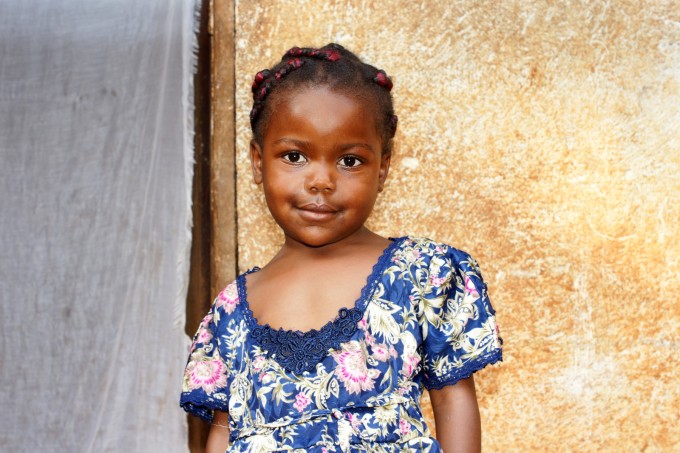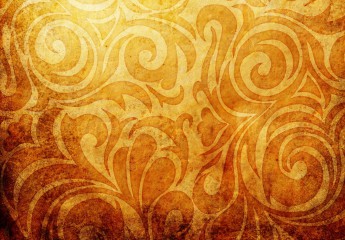Like many African Americans, I grew up not knowing where I came from. There was no “old country” for us. Obviously, I knew that most slaves were brought from Central and West Africa. I heard family stories about being part Native American – that the Seminole Indians had helped slaves escape from their masters by sheltering them within their tribe. That my grandfather’s mother was half Cherokee, part Scotch-Irish, as well as African. Her long black hair and high cheekbones in the one photo I saw of her bore this out.
For a while, these stories were enough. I believed that I would only really find out, if ever, in the afterlife.
When I was 29, I moved from New York City to Argyle, N.Y., a small upstate farming town that had been settled by Scots. Since Fergusons were on the original patent, I was often asked, while interviewing people by phone as a local reporter, if I was one of the Argyle Fergusons, and I would laugh, and say no, and explain that I was African American, not Scottish.
 (Cameroonian girl, stock photo)
(Cameroonian girl, stock photo)
A few years ago, at a National Association for Black Journalists conference, the company African Ancestry was doing free DNA analyses for some of the attendees as a promotion. I sat transfixed as the African ancestry of various people was teased out; and listened with amazement at how the person displayed some similar traits as their ancestral land … for example, a gift with textiles.
After that, I became more curious about my ancestry. As the one of the few black people in Argyle, I always wondered why I felt so at home there. Walking into the school auditorium to cover the town’s high school graduation, and seeing all of the McKernons, Liddles, Campbells, McWhorters, felt familiar and natural.
I took a selfie one day lying on my couch and spent minutes studying it intently. The sun was in my eyes, so one eye came out a light brownish gray, the other a dark brown. My skin was caramel brown with yellow undertones. My nose was African. My lips were full. My cheekbones high. I looked at the selfie intently. Who was I? What ancestors contributed to my unique look?
I finally decided to do it … I sent in a sample of my saliva to Ancestry.com.
The directions were easy. Spit up to a certain designated level. Snap the cap with preservative on the test tube. Shake. Seal. Deliver in the self-addressed envelope. Create a portal on the Ancestry web site. Wait.
Finally, they were there. The pie chart that held the mystery of my ancestry.
I had a cousin who had taken the test before me. Her results had come back that she was only 1 percent Native American. Skip Gates, of Harvard University and of the PBS series Finding Your Roots, had written that for most African Americans, Native American ancestry was almost entirely absent. There hadn’t been many opportunities for slaves to mingle with Native Americans outside of a few states like Oklahoma, along the Trail of Tears. His research had shown that most of those light brown people with high cheekbones and long black hair were an admixture of African and European.
I was not surprised that my results bore this out. 71 percent African (including 2 percent North African); 28 percent European and a mere one percent Native American.
The ancestry was so straightforward, it was almost a letdown. African and European. We knew all about the forced sex on Southern plantations; so that was no surprise.
But I still was happy to know more about my ancestors than I ever had. The majority of my DNA was from Cameroon. Cameroon was named by Portuguese, who found that a major waterway teemed with shrimp; therefore they called it Rio dos Camarões or Shrimp River. Facing the Atlantic, it was one of the first places Africans were enslaved. I wondered if my love of the ocean and for seafood was encoded in my DNA. I now know that my family has been in this country from slavery’s early days in the 1600s or early 1700s, since we are descended from some of the first peoples brought from the African continent. Therefore, despite the persistent and resurgent racism in the U.S., I have always, proudly and firmly, felt very American.
Twenty-two percent was Great Britain, which in Ancestry.com’s breakdown, meant England, Scotland and Wales. Because of the family lore about Scottish ancestry, I assume that ancestry was Scottish. Could that explain why I had always felt at home in a land settled by Scots?
The Argyle Scots had been brought to upstate New York to become a buffer between the French and Indians and English settlers. A Capt. Laughlin Campbell was the man who sailed his compatriots to New York. First, though, he brought the South Carolina Fergusons over. My family is rooted in South Carolina. So although I wasn’t descended from the Argyle Fergusons, I was undoubtedly related to them by way of Capt. McLaughlin Campbell.
Next was Ghana (15 percent) Senegal (10 percent) and Benin, 9 percent. I had a high-school friend whose mother had always said I looked Ghanaian and my younger sister’s been told she resembles the nomadic Fulani, who originated in North Africa and peopled many West African nations. So it came as confirmation to discover our North African ancestry. I remember two Senegalese French teachers in high school, whom many of our classmates swooned over. I always used to say that Senegalese men were the best looking men in Africa. Perhaps it’s because something in my DNA recognized something of my ancestors in their faces?
Finally, Benin, the land where the beautiful bronze heads originated. These were master craftsman, artists, among the best on the African continent. My mother, aunt and grandfather were all skilled artists. As well as an aunt on my father’s side. Coincidence?
Although nothing materially changes when you know your ancestry, somehow it ameliorates part of the mystery of who you are and where you came from. Just because of a little bit of spit in a test tube, I now know at least part of the story of my forebears – as told by my DNA.
This story originally appeared in the Huffington Post: Black Voices. http://www.huffingtonpost.com/hope-ferguson/the-story-in-my-dna_b_10008126.html

Ms. Ferguson – I came across your blog post when I found it through a news aggregating site for my hometown of Argyle. I haven’t lived in Argyle for a long time, but I grew up there through college. My mom still lives near the village, but I live in southern California with my wife and – more or less – my two daughters (just graduated from colleges). (I was back in Argyle for a long weekend at the end of July). Anyhoo – I found your post really interesting. I am always fascinated with genealogical mysteries and stories – I try to dig up my own genealogical past as much as possible. I’ve been meaning to do the Ancestry DNA test, and should just go ahead and do it. My families go way back in Argyle, but I’m not apparently related (closely) to any of the original Campbell Scots. A lot of my ancestors were Rev. Clark Scotch-Irish followers, and I have a mess of others – German, Dutch, English, etc. I have Northup ancestors but haven’t been able to find how they might have (or not) been connected to the white Northups who were associated with Solomon Northup and .his father Mintus. Regardless, of all this, I just wanted to say hello to you as a fellow Argylian (I guess, I still consider myself one), and hope that I get to say hi sometime in person if our paths were to cross. Take care, Mike H
Thanks for dropping me a note. I remember a Joan Huggins, who I think worked as the village clerk.
Please read my blog we have the same surname and almost the same story and the same inrerests https://blackhistory938.wordpress.com/2017/05/03/my-carribean-african-ancestry-dna/
Reblogged this on Black History & Culture and commented:
How our stories and family character traits can be so similar yet we remain unknown